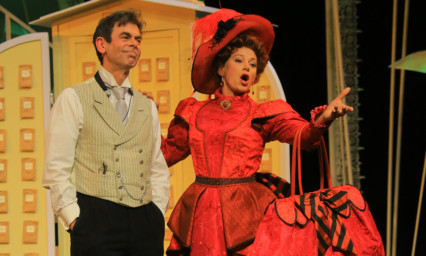The future of Pitlochry Festival Theatre is looking bright after the popular drama venue recorded a record-breaking summer.
Almost 17,500 visitors flocked to the Theatre in the Hills to see one play the critically-acclaimed production of Hello Dolly.
The flagship musical has now become the fifth best-selling show of all time, attracting fans from across the UK and even further afield.
Chief executive and artistic director at Pitlochry Festival Theatre, John Durnin, also revealed an impressive rise in overall sales.
He said: “Although Hello Dolly led the way, we’ve been delighted by the performance of the whole summer season.
“We’ve seen an 18% increase in summer season sales by comparison with 2012 a huge uplift in just a single year. We’ve received so much positive feedback about the quality of this year’s shows and the incredibly high standards set by our wonderful acting company and it seems that those responses have helped to generate a major increase in overall attendances.”
Not only has the boost in visitor numbers benefited the theatre, it has also helped the local economy. Research has shown that almost 60% of patrons stay overnight in Pitlochry, spending an average of £350 to £450 per person.
The good news comes two years after the venue faced financial uncertainty after losing £300,000 of annual funding following the reorganisation of the Scottish Arts Council.
To cope with the significant change to its situation, the theatre sought a short-term loan from Perth and Kinross Council to help develop a sustainable business plan.
These efforts now appear to be paying dividends as audiences continue to travel to the relatively remote venue to enjoy the wide repertoire of plays.
Mr Durnin revealed the theatre’s enduring appeal, saying: “One audience member wrote to me to ask how it was possible for PFT to deliver West End standards when audiences here only pay about a third of West End prices. The answer is, of course, with great difficulty.
“But we continue to believe in trying to offer audiences the best possible theatre experience at the lowest possible price and I’m sure that the success of the six summer shows this year is, in part at least, a reflection of that ambition.”
